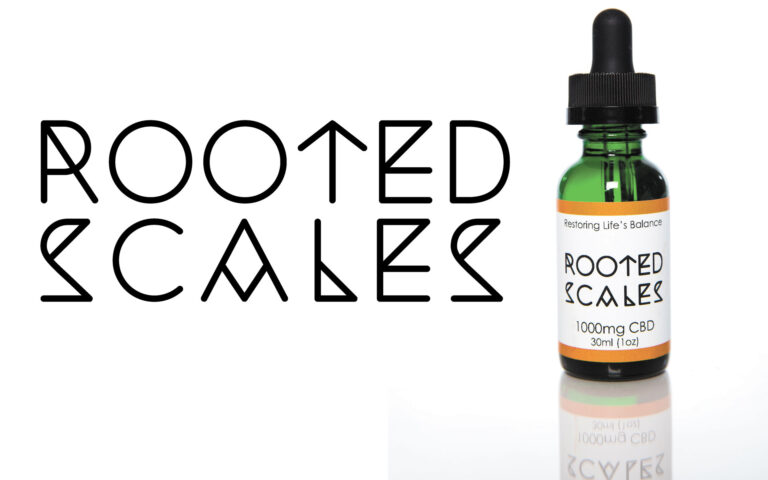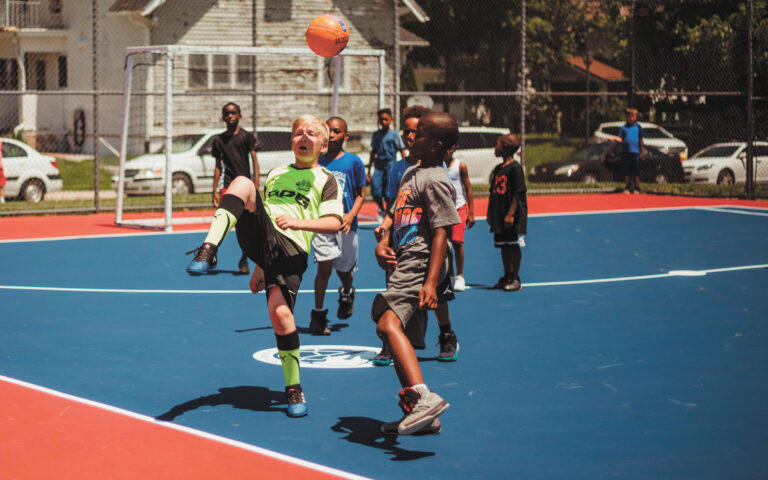By Ben Lashar
IT IS HARD TO EMPHASIZE THE IMPORTANCE OF EMPLOYEES without resorting to obvious platitudes. Of course, no business owner could find successes without quality employees. Even the coldest utilitarian recognizes the need for a skilled workforce. What’s less obvious is the recent increase in the value of skilled labor.
For many, the conversation about job skills is not about how potential employees can better compete with each other for a limited amount of jobs. It is about how employers can compete with each other for a limited amount of workers. A skills gap looms between what skills the workforce possesses and skills employers seek. Many organizations and businesses across the state are trying to create ways to fill that void found in various fields.
WHAT’S THE SITUATION?
Two main factors caused Indiana’s skills disparity: low unemployment and changes in what skills are in demand. According to Fred Payne, commissioner of the Indiana Department of Workforce Development (IDWD), Indiana’s unemployment rate is 3.6 percent, which lands just below the national average of 3.7 percent. Many Hoosiers benefit from the low unemployment rate, but low unemployment also means less people actively looking for work, making the search for qualified workers much more difficult.
To further complicate the matter, some of the highest demand jobs, such as technology and health care positions, require skills not many job searchers have. Even less specialized fields are starting to seek employees with different skill sets. Payne says the number of manufacturing jobs is growing in Indiana. However, Dr. Kathleen Lee, chancellor of Ivy Tech Community College, Indianapolis, adds a caveat: manufacturing in 2019 requires more technical know-how. Manufacturing companies now need more employees trained in areas such as IT and robotics, not just laborers.
“This isn’t grandpa’s manufacturing,” Lee says. “This is the manufacturing of today and the future.”
The inability to find and hire qualified employees can be frustrating or prohibit productivity. However, many organization are solving the skills gap.
THE EFFORTS OF EDUCATION ORGANIZATIONS
Educational organizations are a resource for filling skill gaps both big and small. Sometimes these organizations take the form of traditional four-year colleges. Others offer a shorter and more specialized education. Either way, post-secondary education, in whatever form it takes, will likely become an even more essential part of developing job skills in the future.
“This is one thing for sure: that many of the jobs that will be available in the next 10 years will need some degree of post-secondary education,” Payne says, adding that Indiana aims for 60 percent of Hoosiers to have a post-secondary education by 2025.
Some post-secondary institutions such as Purdue Polytechnic Institute specialize in programs for high demand area. The college not only features stronger STEM leanings than liberal art programs, but also follows a problem-solving philosophy.
Students use a capstone project to help a business solve a real-life problem, proving their value to potential employees. Brooke Huntington, assistant dean for Purdue Polytechnic Institute, credits student’s problem-solving prowess in part to the college not neglecting the humanities while teaching STEM.
“We recognize that we are solving problems that aren’t just tech related,” Huntington says. “They often are related to human issues, so we work very closely with our counterparts in liberal arts and the humanities across our campus and outside.”
At Ivy Tech, every program features an advisory board consisting of people in that field. The board ensures students learn the skills needed for present day and the future of their intended career.
Ivy Tech also assists businesses just as businesses assist them. The college helps make businesses skills-rich by training current employees in technical skills. They offer programs where businesses can hire Ivy Tech to train employees in anything from navigating new software to using 3D printing.
“We might get a call from a company, who is, for example, is updating their entire computer system using a new software package or something and needs training for in-house employees just to get that new very specific skill set, so we might go onsite then,” Lee says.
KENZIE’S NEW MODEL
After a history in both Wall Street and Silicon Valley, Chok Leang Ooi created a business to address gaps in the tech industry through training talent overseas. He eventually came to an important conclusion.
“Why are we looking so far away when there’s so much untapped talent in our own country?” Leang Ooi says. “Particularly in the Midwest where the economy is going through a major digital transformation.”
Leang Ooi went on to become CEO and founder of Kenzie Academy, Indianapolis, a middle ground between a traditional college experience and a coding boot camp. Kenzie looks more like a tech startup than a school. There are no lecture halls, dry speeches or teachers. The schooling consists of industry professionals teaching through project-based lessons.
Kenzie addresses the skills gap by lowering the barriers to a technical education, with price being one of the biggest obstacles. Instead of student loans, students pay Kenzie a percentage of their paycheck for four years if they get a position after graduation. If they don’t find work in their field, they don’t have to pay.
Kenzie also makes it easier to earn a living while studying for two years by offering earn and learn programs in which students get jobs in a tech call center, for example. Hours are built around their school schedule. Not only do earn and learn programs ease financial concerns, but such programs also teach soft skills like customer support.
Kenzie might be only two years old, but it already is showing success. Kenzie currently has 120 students and Leang Ooi expects the number to grow to 300 by the end of the year. In addition, over 50 percent of Kenzie’s first round of graduates found a job with a salary around $50,000 a year the same month they graduated.
INCENTIVES OF NEXT LEVEL JOBS
In addition to educational organizations, the state also attempts to fill in skills gaps with programs such as Next Level Jobs, Gov. Eric Holcomb’s job training program focused on developing job skills agenda. An important part of Next Level Jobs is the Employer Training Grant, which reimburses employers for offering on-the-job training for high-wage and high-demand sectors: advanced manufacturing, building and construction, health and life sciences, IT and business, transportation and logistics, and agriculture.
The grant awards employers up to $5,000 for every employee trained with a total maximum of $50,000. In order to count, the training must exceed 40 hours, be completed within 12 months and not related to human resources or informal job shadowing. Currently, around 450 companies participate in the Employer Training Grant such as Tyson Foods, Allegion, Farmers Insurance and Indiana University Health. These employers are training around 7,000 employees. The resulting workplace training can be both an attractive feature to prospective hires and a way to improve workplace output.
“You’re seeing employers really being creative and trying to make sure they’re retaining employees and ensuring they’re doing all they can to recruit and attract employees.” Payne says. “That’s where we, the state, have helped”
THE POSSIBILITIES OF ON THE JOB TRAINING
Be it through a partnership with schools, government programs or independent efforts, many businesses have found addressing a skills gap is not just about discovering new employees. It’s also about cultivating current ones.
Cummins has embraced on the job training. The company is located in Bartholomew County, which has between two and three percent unemployment, so discovering new hires equipped with the necessary skills is challenging. Cummins adopted what its Southern Indiana Placement Services manager Harold J. Wilson calls a “hire and develop” philosophy to address the problem.
Not only does Cummins have trainers whose sole job is to help new hires, but the company often pairs new employees with older ones in mentorship programs. Programs can both teach employees about their current job and/or help them on the path to getting better jobs in the company.
“We have a lot of opportunity for career growing and opportunities to do more than what they are hired to do,” Wilson says. “A lot of the people we have coming to us today have a little work experience and have worked for a lot of other companies, but when they come to Cummins, I believe that they’re more focused on wanting a career. They don’t want necessarily a job. They want to grow.”
For example, Cummins offers an industrial electricians training program because there are very few industrial electricians in the workforce. Without this apprenticeship program, Wilson says the gap in the company would be “significant.”
BUILDING A JOB PIPELINE
There are ways for employers to attract quality workers other than making a job posting and hoping for the best. Praxair, an industrial gas company with locations across Indiana and U.S. headquarters in Connecticut, has the Praxair’s Skills Pipeline workforce development program. The program not only for Praxair employees, but individuals from the community, looking to increase their marketable skills.
Praxair’s Skills Pipeline workforce development program is a collaboration between Praxair and Ivy Tech that helps people develop manufacturing skills. Tamara Brown, Praxair’s director of sustainable development and community engagement, identifies five key pillars of the program. The first is community events or advertising the program through avenues such as school visits and job fairs while educating about possible career paths. The second is instructorships where Praxair helps fund resources for schools to teach these skills. Pillar three involves scholarships that make the program affordable. The fourth pillar is continuing education where the program builds on people’s existing skills. Professional development, or bringing in guest lecturers involved with Praxair, is the final pillar.
“If you will give your hard work and your dedication to finishing the program, then you really are unencumbered in terms of the cost of the program,” Brown says.
While not everyone who attends the program ends up working for Praxair, it has been a useful employee development tool. Brown notes that one Praxair location once suffered from a severe lack of welders, much like the rest of the industry, as older employees retired and no new employees filled that void. The workforce development program helped Praxair create a new pool of welders.
THE FALLACY OF A SUPERSTAR TEAM
Perhaps one of the simplest yet most effective ways to solve a skills gap in a company is to rethink hiring practices. Businesses owners often fall into the trap of thinking of the perfect hire: an over-achieving leader with a list of impressive accomplishments and complete knowledge of his or her field. Tiffany Thompson, chief recruiter at Damar Staffing Solutions, warns against being too attached to that image of an employee because it can cause employers to overlook other potential hires.
“You can’t run an organization of only superstars because the competitive make up of those kinds of people ultimately don’t get things done,” Thompson says.
A team of only average Joes also fails to be optimal because the workers might not aspire to excellence. Thompson instead recommends hiring a diversity of personalities. A healthy combination of the two groups leads to a well-balanced and productive workforce.
Thompson also urges employers to consider both hard and soft skills when hiring. Hard skills are important, but they are also teachable. Soft skills are much harder to teach, so employers can mold prospective hires who excel in this area into a good employee. Thompson says critical soft skills of a good employee include focused, detail oriented, able to listen and showing a willingness to learn.
“You’ve got to be prepared to understand that you’re not going to get every individual that has all the boxes checked come in the door, so don’t even set yourself up to expect that,” Thompson says. “And understand that a good employee is someone who falls within those four attributes, and you can build from there.”












